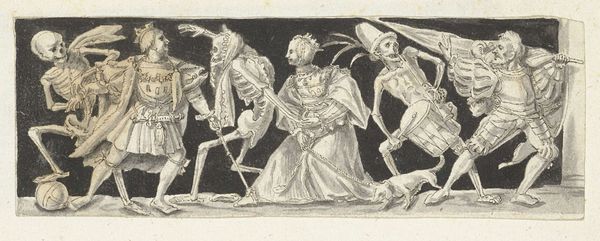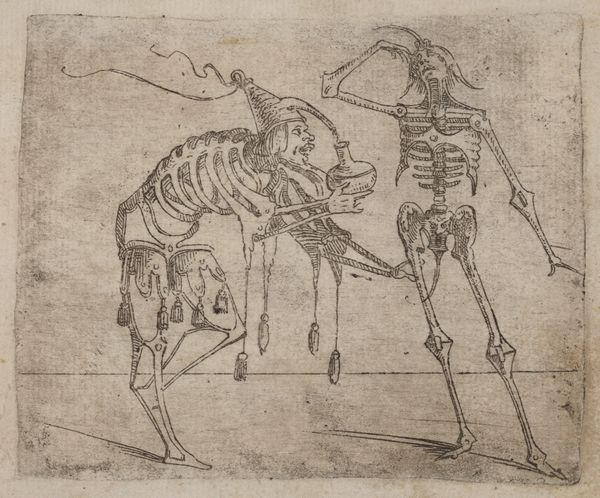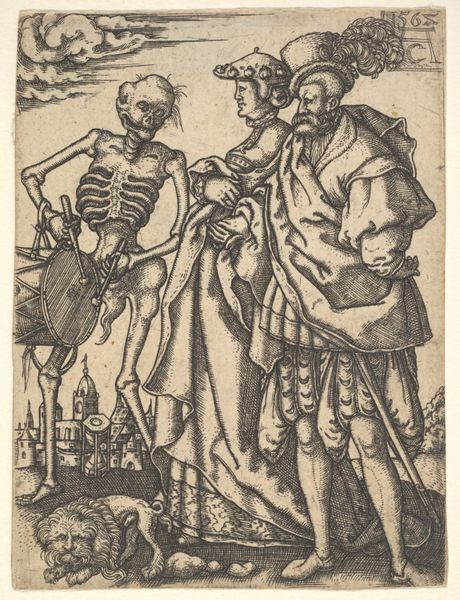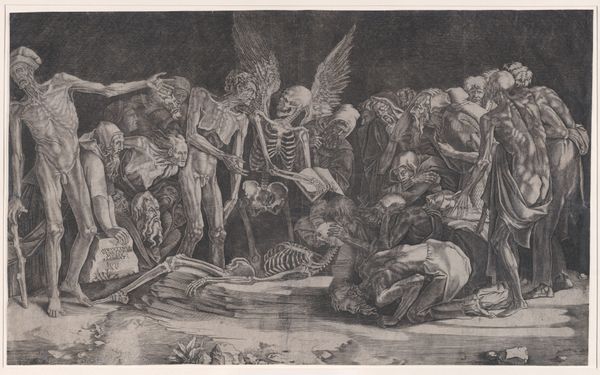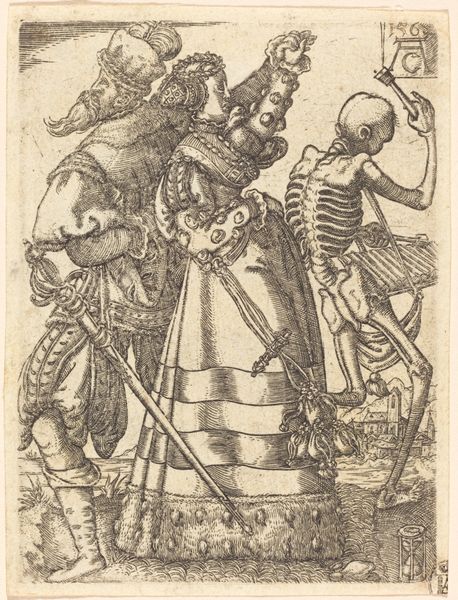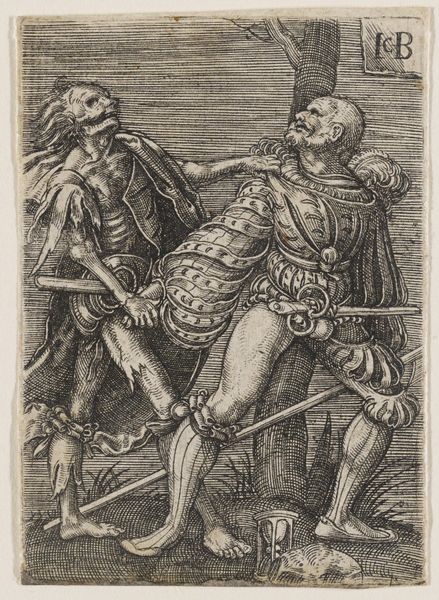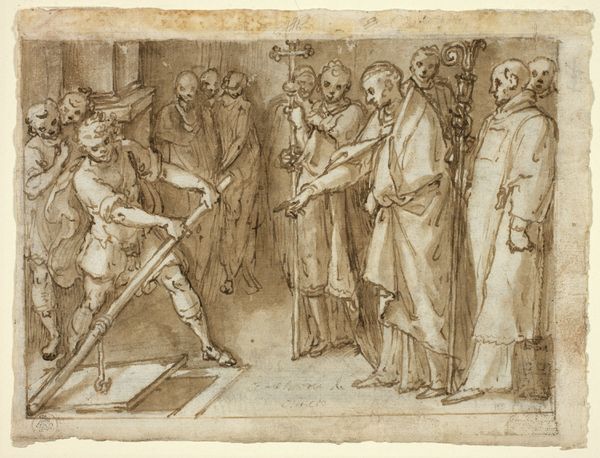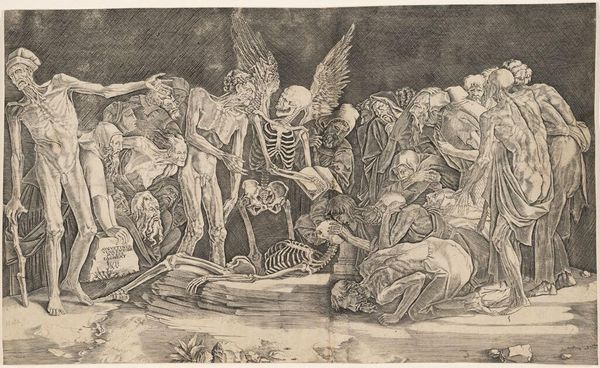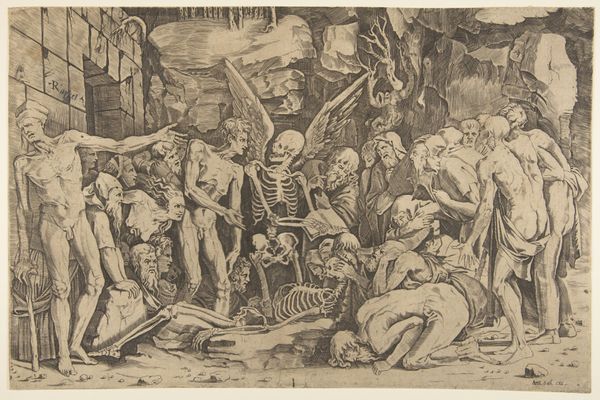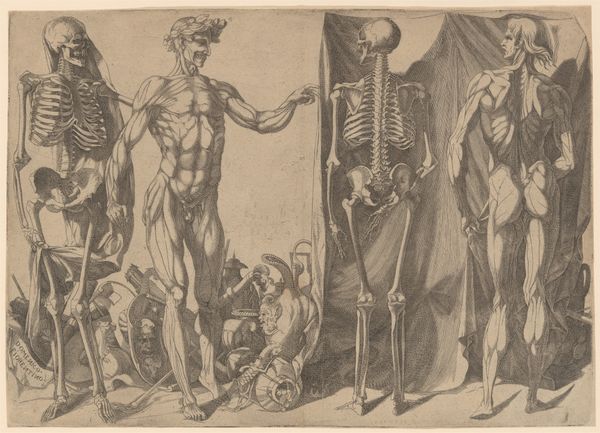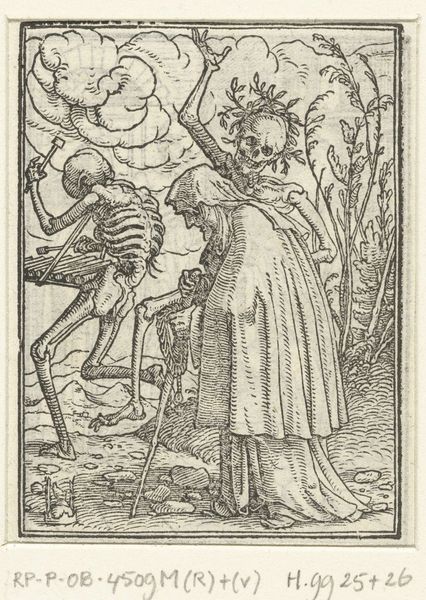
drawing, paper, ink, pencil
#
drawing
#
narrative-art
#
figuration
#
paper
#
11_renaissance
#
ink
#
momento-mori
#
coloured pencil
#
pencil
#
14_17th-century
Copyright: Public Domain
Editor: This drawing, “Totentanzdarstellung mit vier Gerippen,” from 1633 by Monogrammist G S H, uses ink and pencil on paper to depict a dance of death. The skeletal figures seem almost playful in their macabre revelry. What can you tell me about the making of this drawing, and what it might say about its cultural moment? Curator: It’s fascinating to consider the material realities here. The stark contrast of ink on paper, the labor involved in meticulously rendering each bone… it speaks volumes about the process. Consider the cost and availability of paper and ink in 17th-century Europe. Who had access to these materials, and what kind of societal message was the artist trying to send through them? Editor: I hadn't thought about the socioeconomic implications of the art supplies themselves. The “Dance of Death” was a common theme, but seeing it tied to material constraints is really eye-opening. Curator: Precisely. And how does the choice of a relatively inexpensive medium, like ink and pencil, potentially broaden the work's audience compared to, say, an oil painting intended for aristocratic consumption? It encourages us to rethink the intended viewers, the means of distribution of prints made from the work and their affordability, as well as the social strata engaged in discussions of death and mortality during widespread plague. Editor: So, by focusing on the materials and production, we can connect the artwork to a broader network of makers, viewers, and social concerns in the 17th century. That's a perspective shift for sure. I will not only think about who and when, but HOW. Curator: Exactly! Examining art through the lens of materials and process allows us to uncover hidden social and economic dynamics shaping the work and the reception, prompting new questions and alternative interpretations of familiar stories like "danse macabre."
Comments
No comments
Be the first to comment and join the conversation on the ultimate creative platform.

